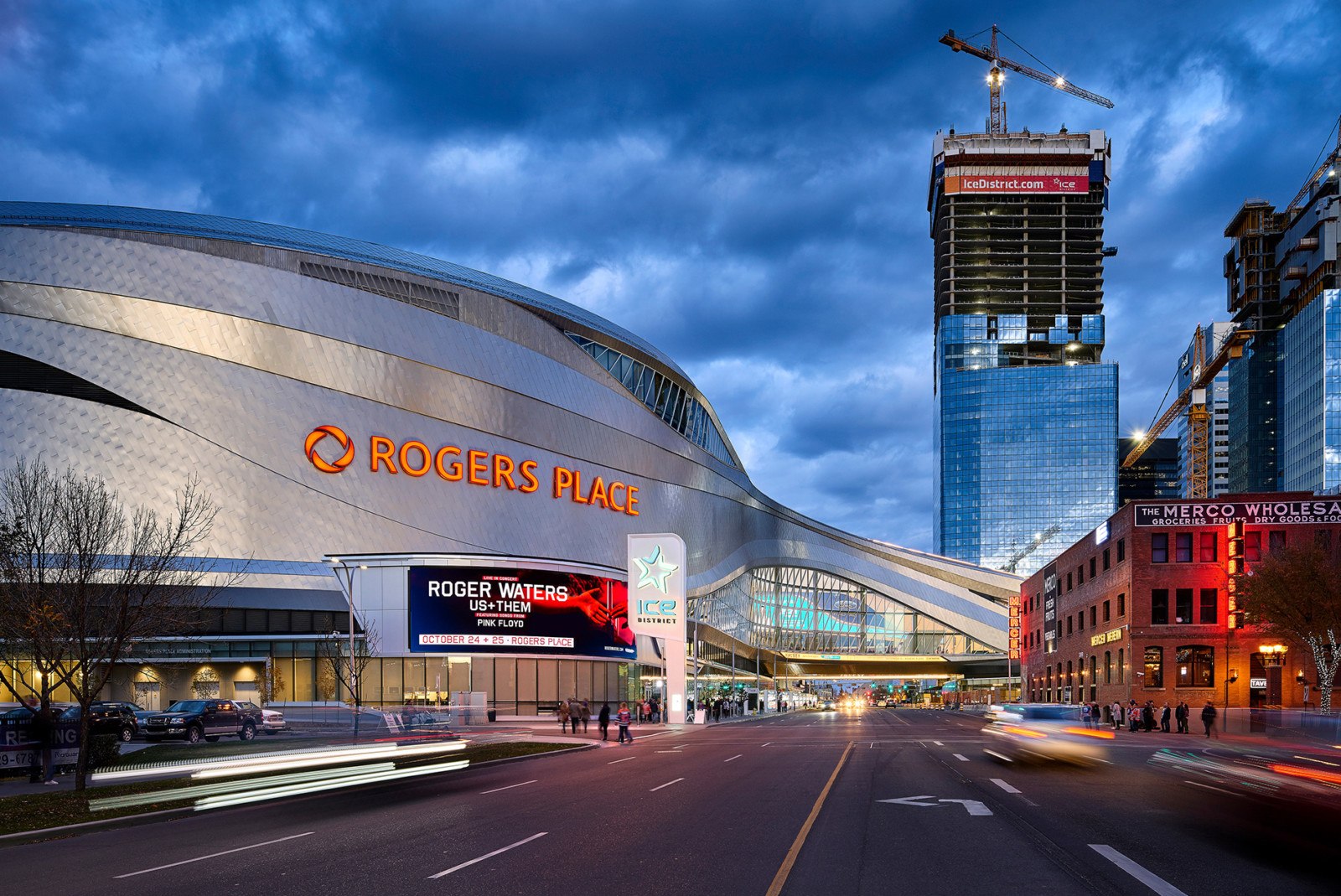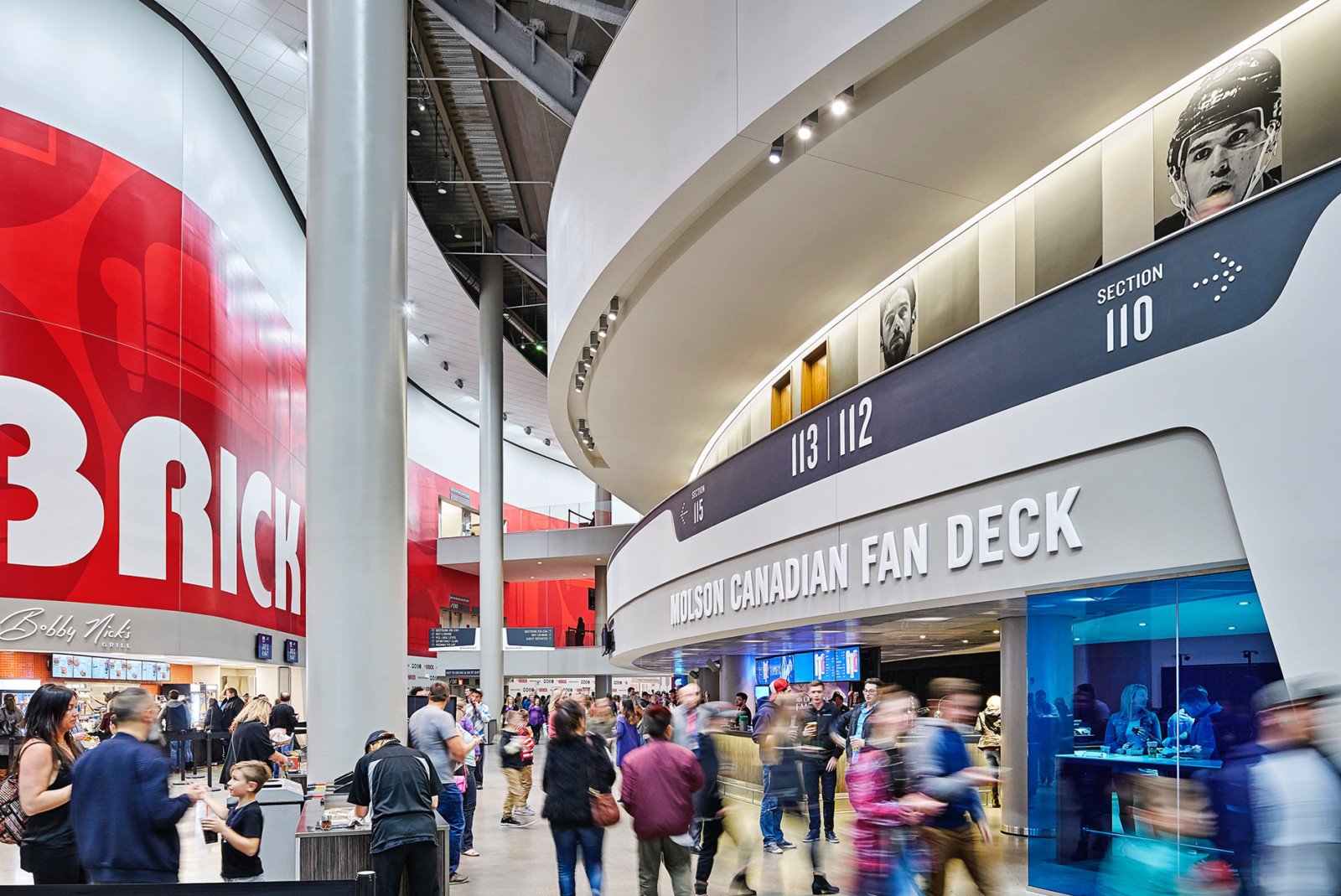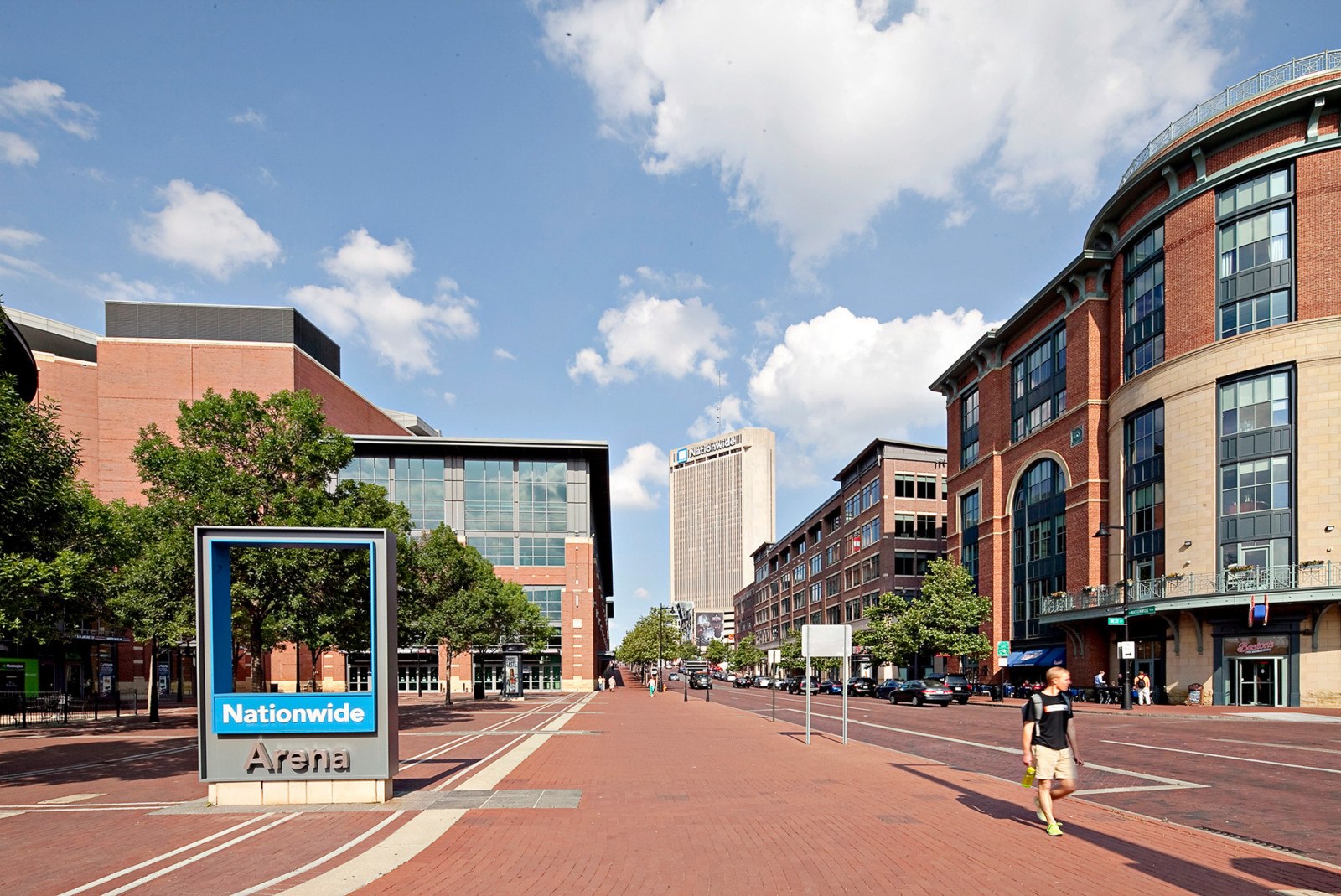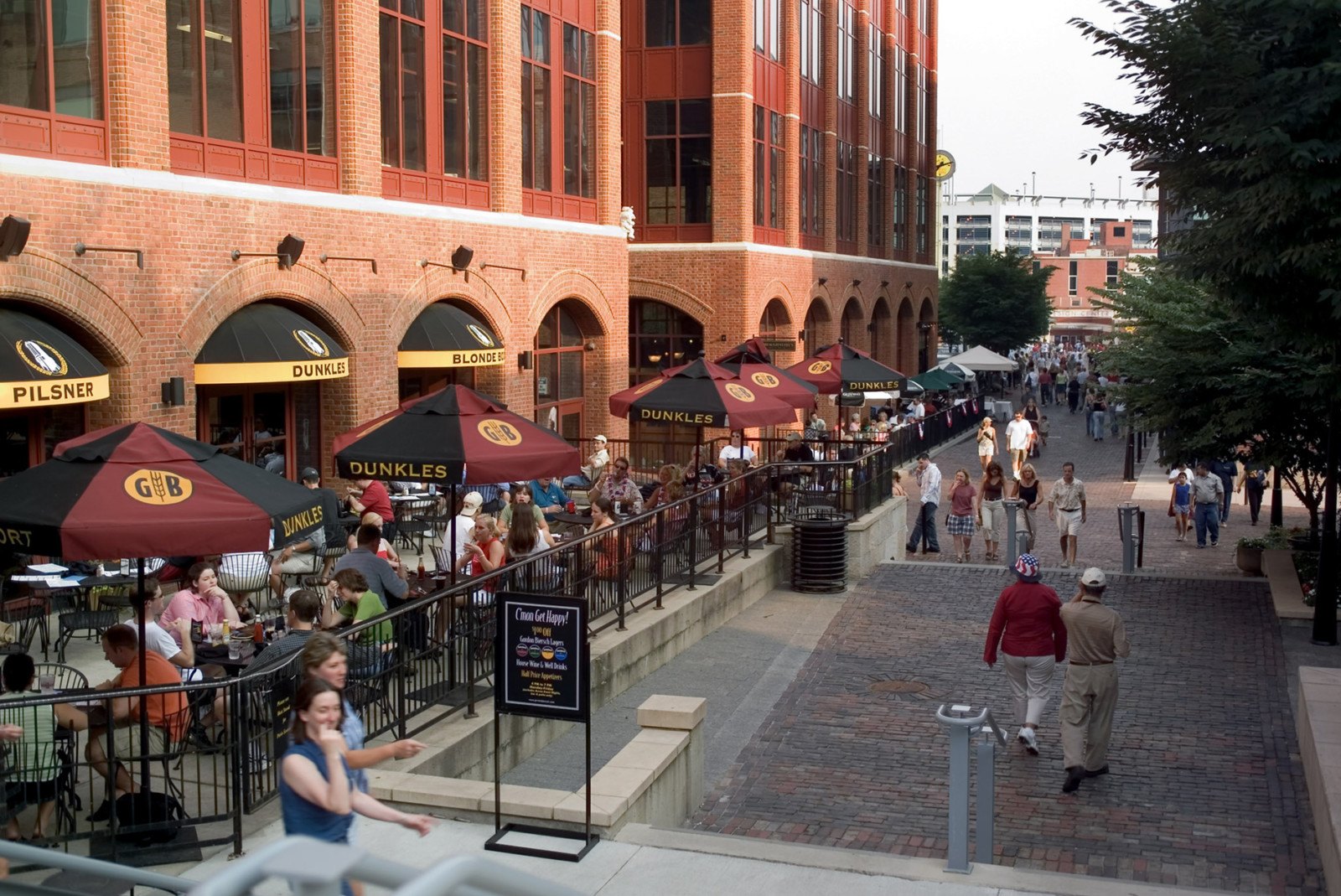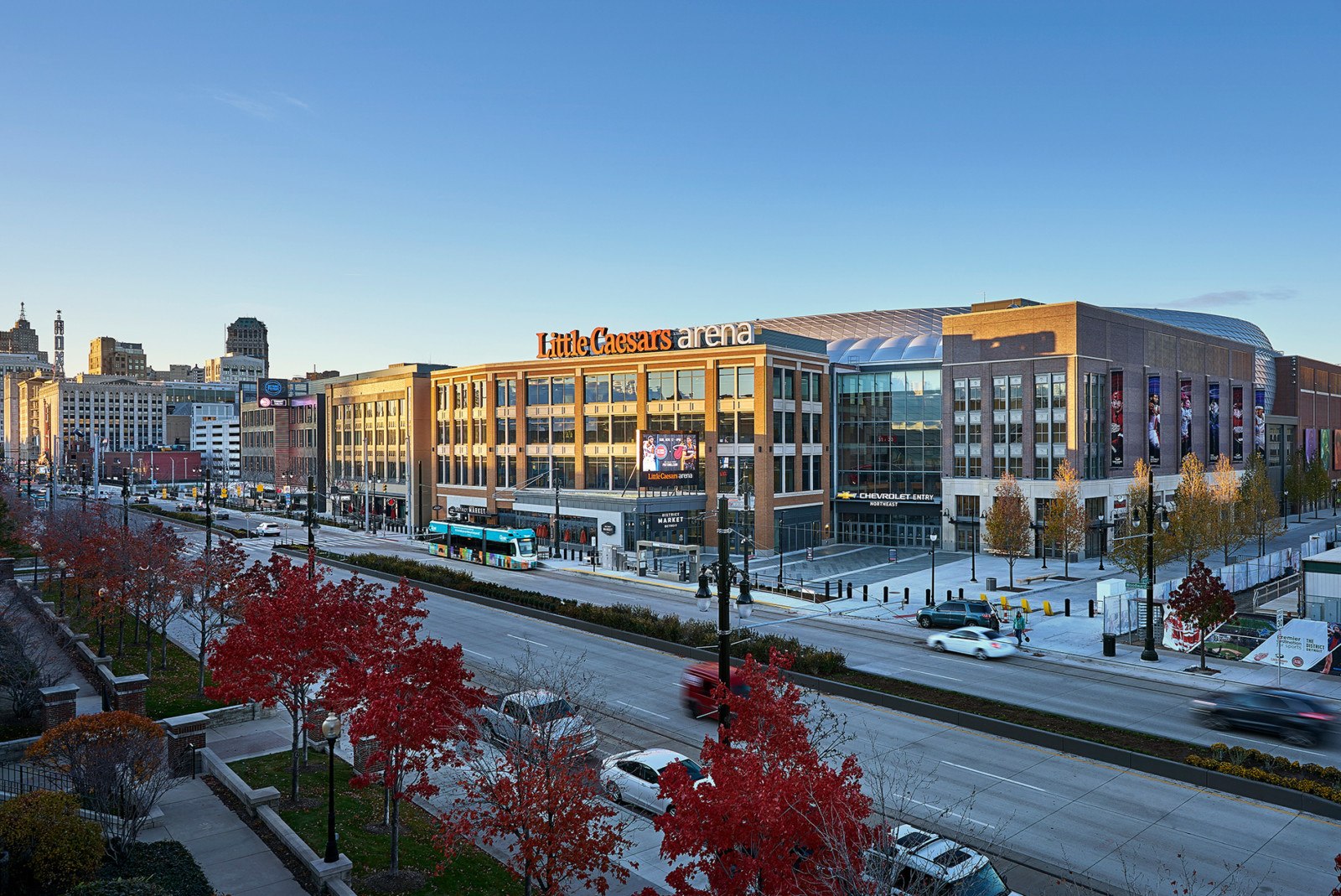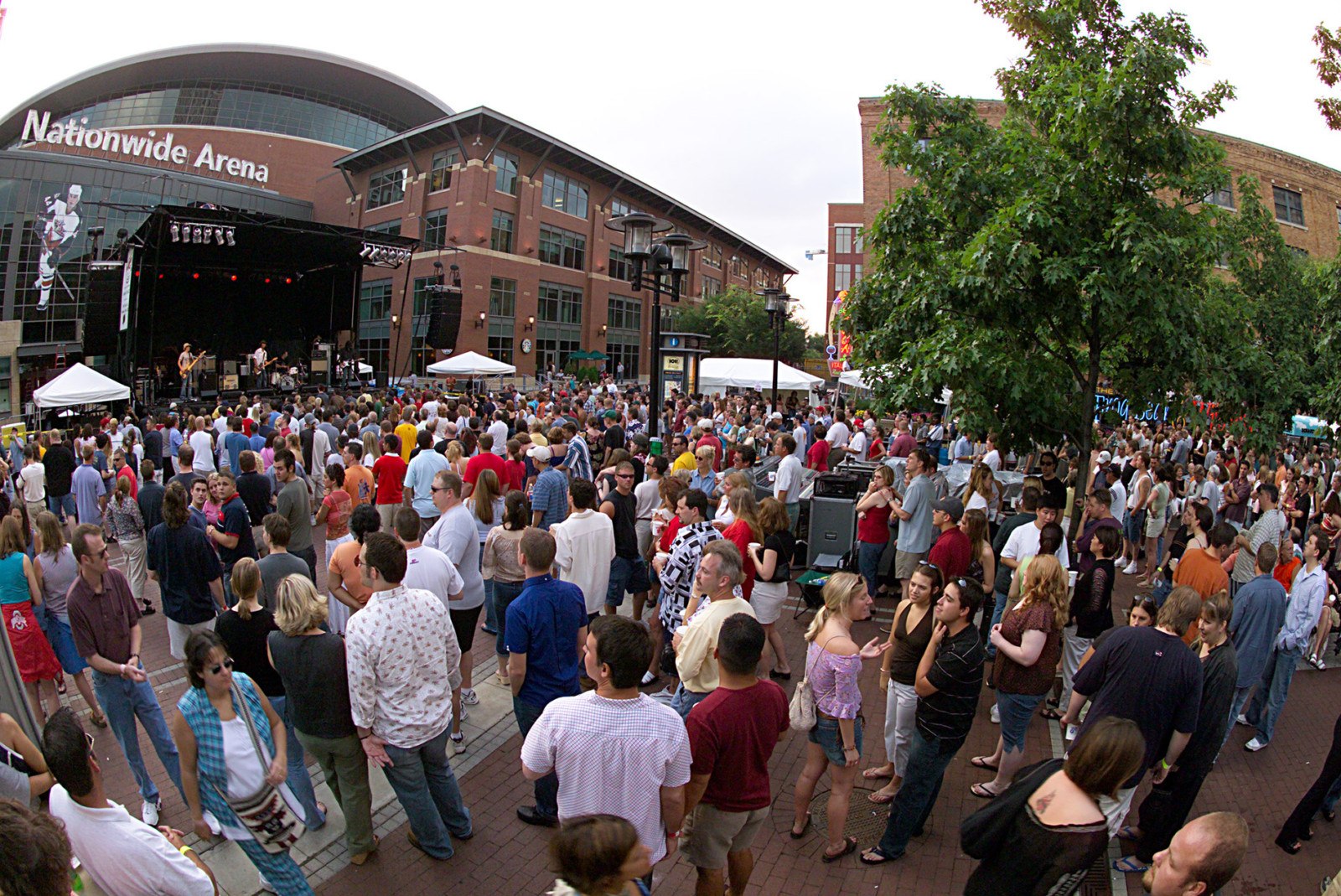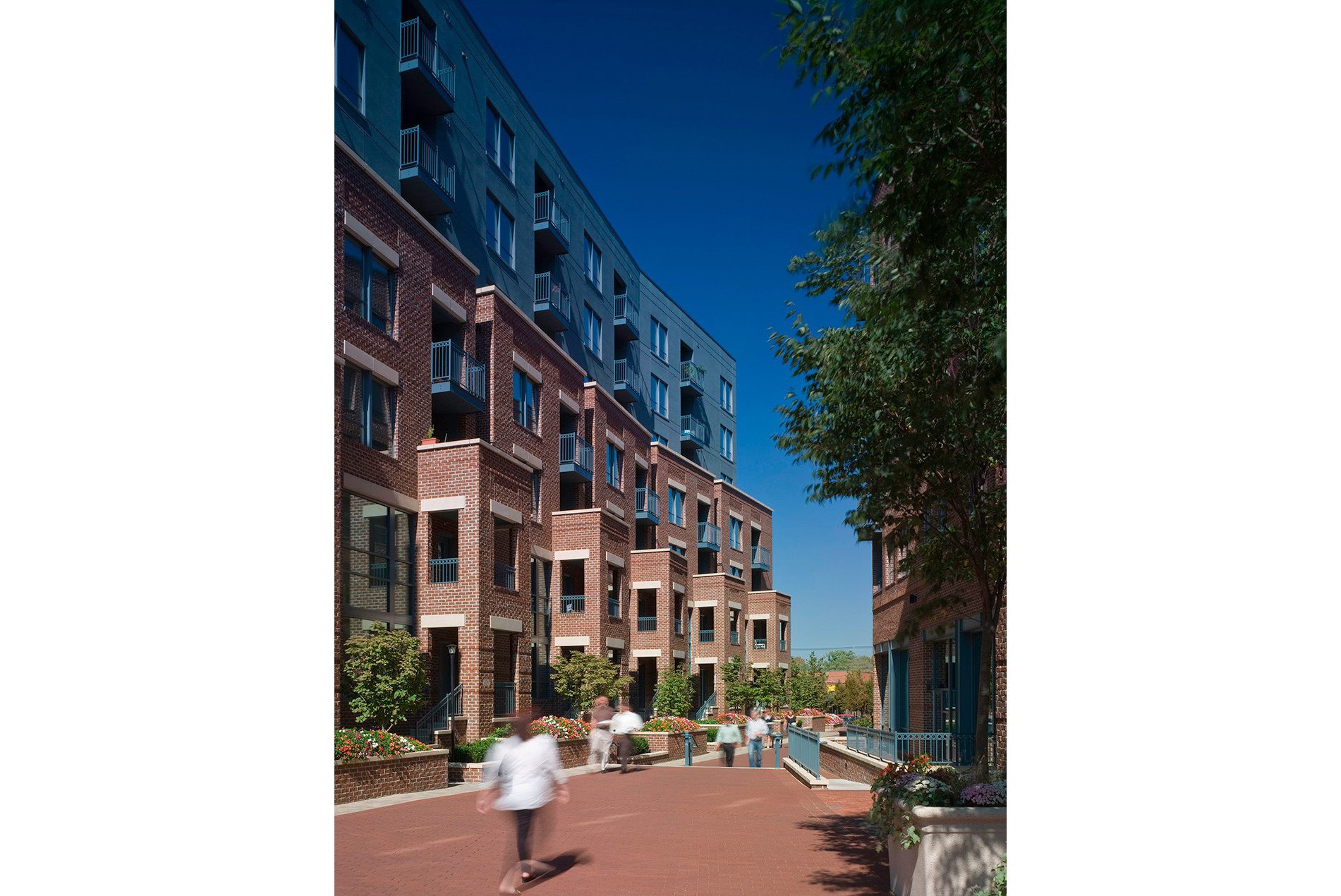Arenas and sports venues invigorate cities. From cheering on the local NBA and NHL team to hosting concerts and other live events, these buildings bring life and energy to a community. When strategically planned, these buildings also can serve as anchors for sports and entertainment districts that spur development and activity beyond the arena walls.
By considering the neighboring district, arena projects can add to the culture of a city and boost revenue streams for sports teams, nearby businesses and city coffers.
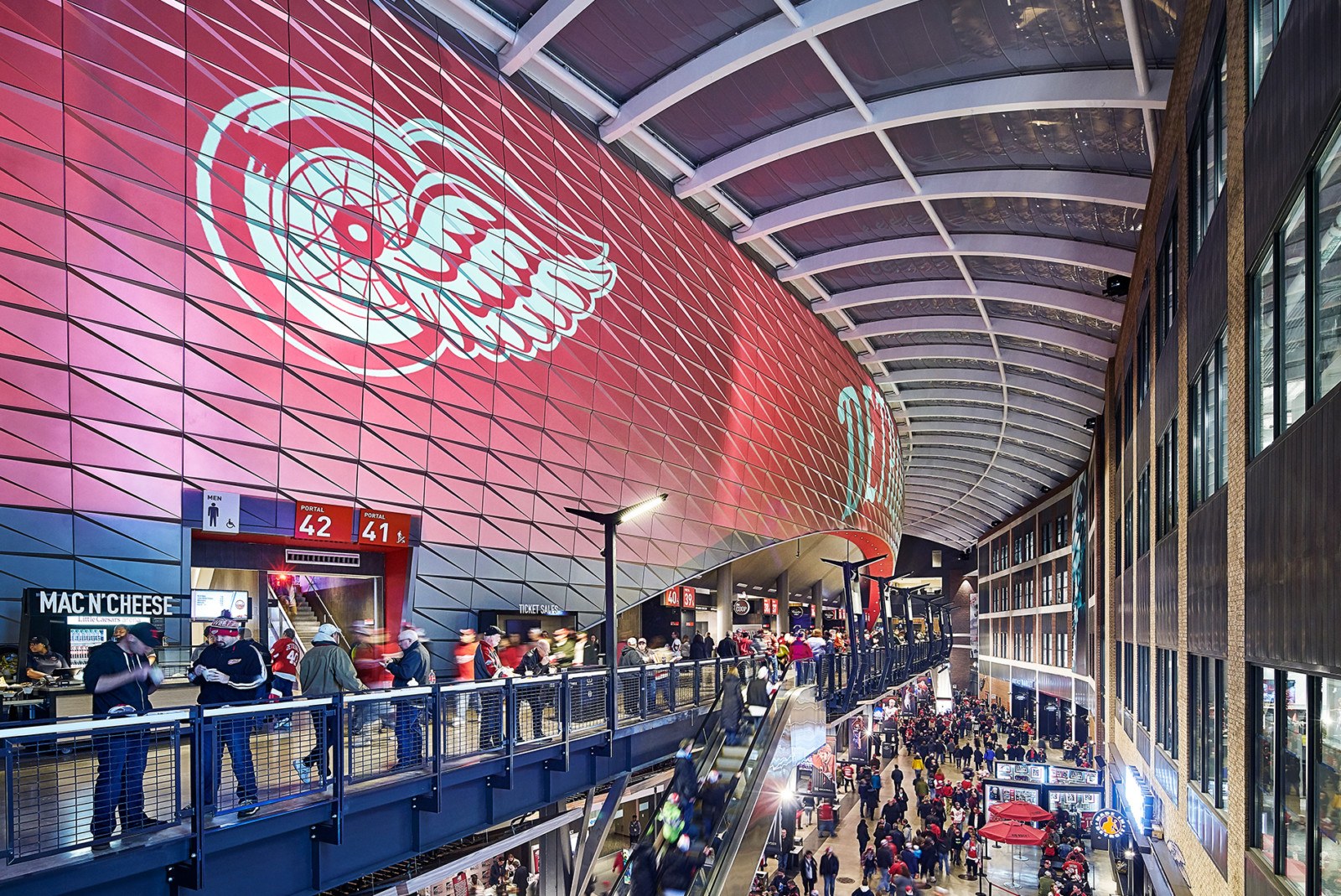
But what are the ingredients for a successful sports-anchored district? Having contributed to the design of several of these districts across North America, we’ve found that the most vibrant developments share three key attributes: sense of place, community connections and diverse offerings that support sustainability.
Creating a Sense of Place
Sports-anchored districts must complement the sense of place of the surrounding community. Similar building materials, design, landscaping and hardscaping create continuity and add to the neighborhood feel.
Rogers Place and the ICE District in Edmonton, Alberta, offers a good example of designing sports-anchored districts with a strong sense of place.
Home of the Edmonton Oilers, Rogers Place is a sleek, stainless-steel arena designed to complement the city’s modern office towers. The arena extends over the main thoroughfare – 104 Avenue – to connect the two parcels of land identified for development. This elevated, multi-purpose entryway, dubbed the Winter Garden, is further enhanced with commercial development at street level. The covered extension creates bold connectivity, a physical presence and a distinctive brand identity that reinforces the street grid and activates Rogers Place and the Ice District year-round.
Similarly in Columbus, Ohio, HOK planned and designed the Nationwide Arena District in collaboration with Columbus-based MKSK, who developed the district master plan. The consistent look and feel of the district is accomplished with a shared materials palette of red brick sidewalks, roadways and buildings, including the arena itself, to create authenticity that captures the city’s history.
This material palette and its historic feel have since been incorporated into the design of new buildings within the district. The North Bank Park and Pavilion at the southern edge of the Nationwide Arena District are part of a new 1.5-mile trailway for the Scioto River and feature red brick and white stone that further reinforce the district’s materiality and sense of place. Similar materiality and hardscaping extend into the adjacent Italian Village helping to blur neighborhood lines and reiterate sense of place.
Establishing Connections
Decades ago, arenas were often enclosed black boxes that engaged with audiences only within the building. When the event ended, fans headed straight to their cars and home. This practice conflicts with creating a great neighborhood and leveraging a venue for catalytic development.
Arenas should be a beacon connecting a community, encouraging foot traffic and activity throughout the district and supporting fluidity to nearby neighborhoods.
Sports-anchored districts should also establish multi-modal connections in the neighborhood, including walking, driving and public transit. These connections should provide easy, comfortable access for all those living in, working in or visiting the area. Strategically-placed transit stations enhance connections, while parking garages on less active edges of the district encourage quick movement into the district without disrupting areas for development. This adds to the vitality of a city.
In Michigan, Little Caesars Arena, home of the Red Wings and Pistons, anchors the District Detroit, a 50-block, mixed-use development connecting downtown and midtown. The light-rail’s Q-Line runs through District Detroit, with two stations on opposite ends of the arena. Bus stops for multiple lines surround the arena, while MoGo Detroit provides ride-share bicycles with docking stations adjacent to the arena.
Outdoor gathering spaces also support connections within and around these districts. Thoughtful landscaping and hardscaping–including native plantings, tree-lined corridors, pocket parks, walkways and water features–create pedestrian-friendly thoroughfares that promote district vitality.
Located over seven city blocks, the Kansas City Power and Light District is another pedestrian-friendly entertainment destination with dining, shopping, office, residential and entertainment spaces (including the adjacent T-Mobile Center arena). The district features multiple entry points, broad sidewalks, green space and public art to establish pedestrian connections. A public plaza serves as the focal point of the district and encourages ease of access for all.
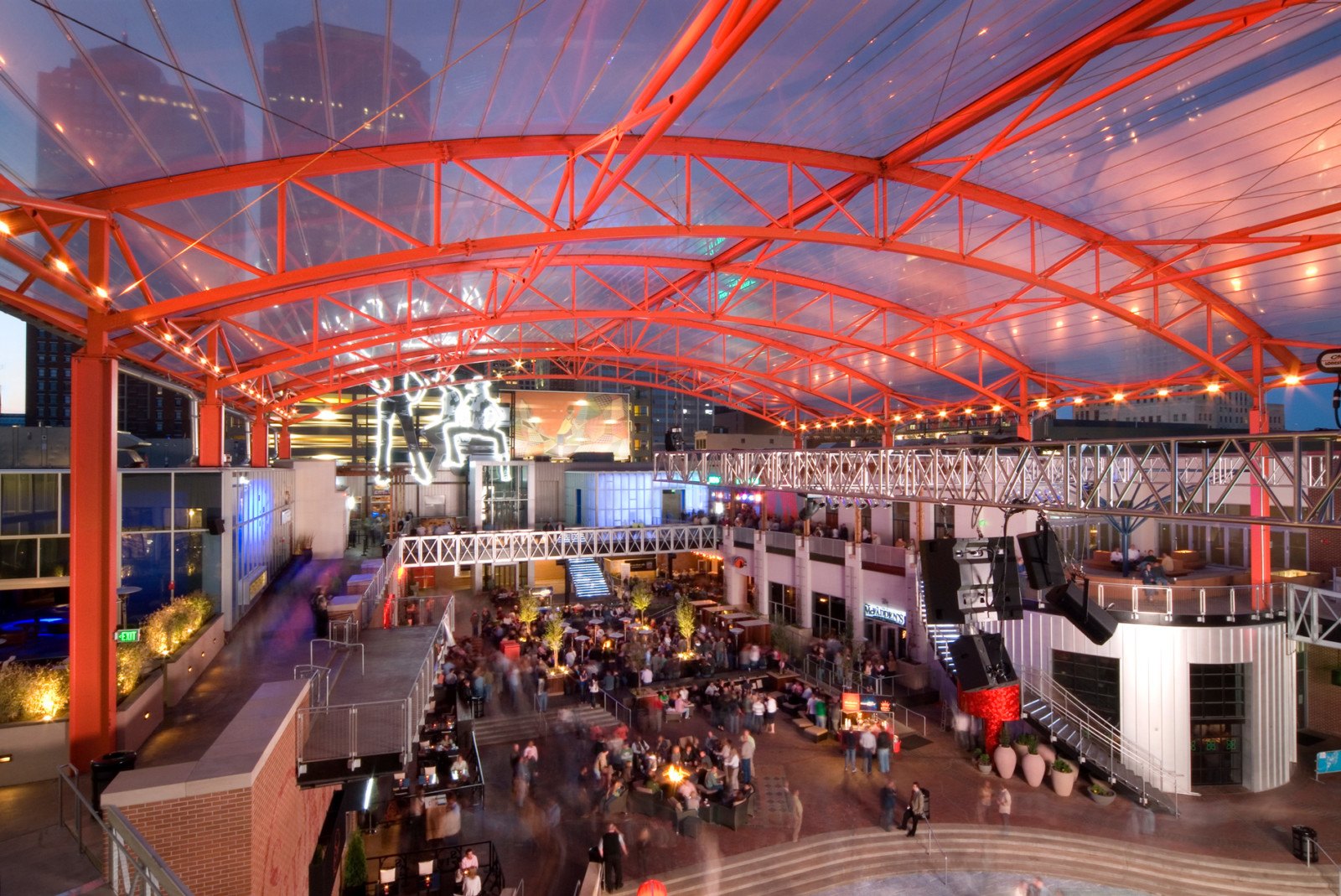
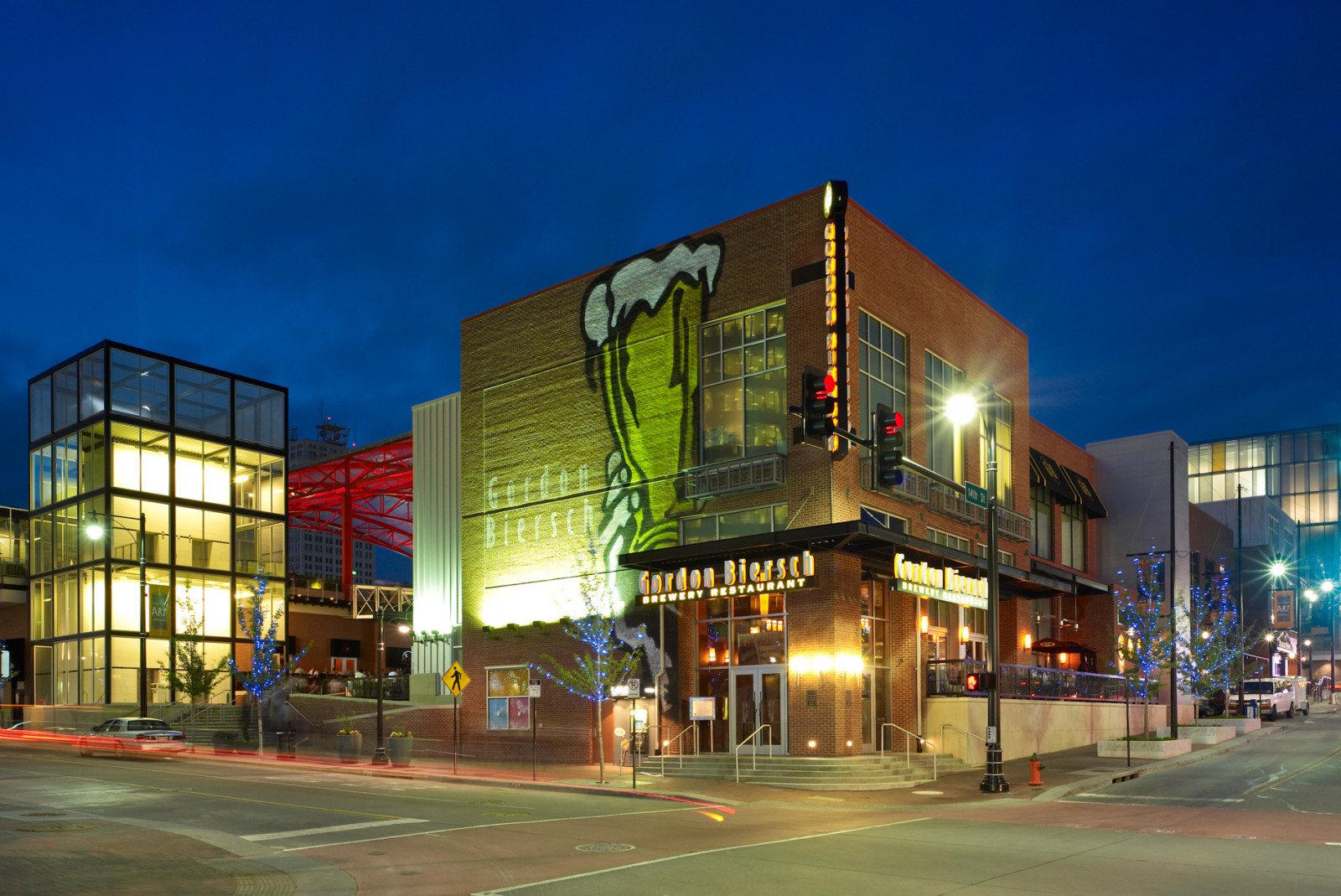
Diversity for Sustainability
To create a lively community and sports-anchored district, 24/7 connectivity is key. A variety of restaurants, retail, residential developments, offices and additional venues and events create a desirable place to live, work and play.
Vibrant mixed-use developments must engage residents, daytime workers and visitors at different times throughout each day, extending foot traffic beyond game days at the arena. This activity creates a diverse neighborhood that is more sustainable and resilient to economic changes.
At Nationwide Arena, we worked with the developer to not only design the arena as a home for the NHL Blue Jackets, but to plan the district to support economic vitality. Formerly the site of a penitentiary, the neighborhood is now an entertainment, workplace, retail and residential destination.
Within the district, which was planned by Columbus-based MKSK, we designed Nationwide Arena, the KEMBA Live! concert venue, Huntington Park (home of the Triple-A Clippers), 1.5 million square feet of office and retail space, and 639 residential units. The district is also home to additional retail, restaurant and entertainment venues, as well as residential and office spaces, including large corporate offices for Nationwide, Chipotle and White Castle.
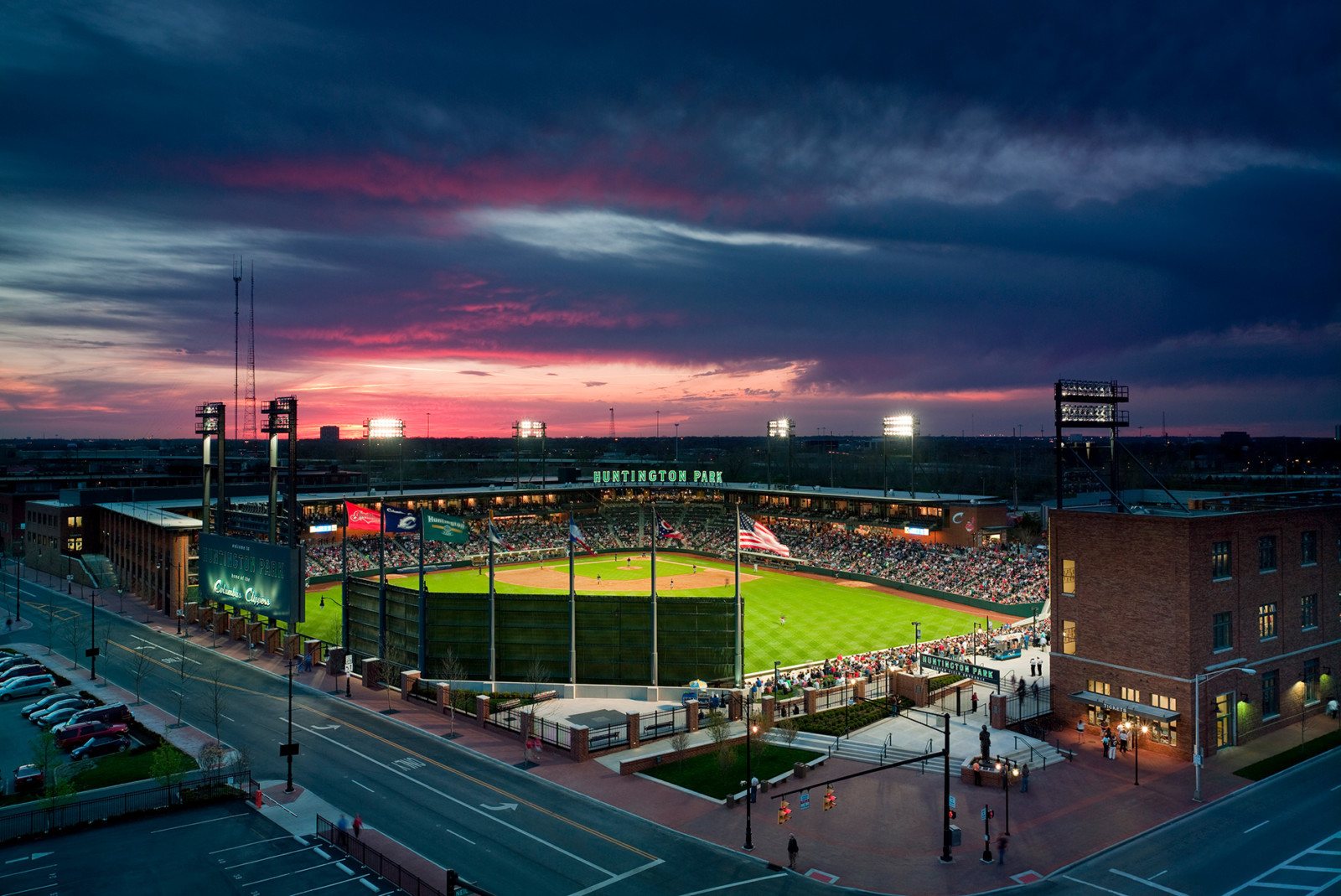
Nicknamed the Billion-Dollar Belt, the diverse district has generated more than $68 million in annual taxes and spurred $1 billion in new investment to Columbus.
All cities are looking for ways to leverage their land to create thriving and active destinations for people to live, work and play. A sense of place, community connections and diverse neighborhood offerings are the ticket to establishing a lively sports-anchored district. Developers can play a major part in making these ideas a reality.
Let’s Connect
Specialists from HOK’s Sports + Recreation + Entertainment and Planning + Urban Design groups collaborate to plan and design thriving sports-anchored districts. For more information or to inquire about working together, please get in touch with:
Scott Ralston, senior project manager, at scott.ralston@hok.com
Bill Johnson, design principal for HOK’s Denver studio, at bill.johnson@hok.com
